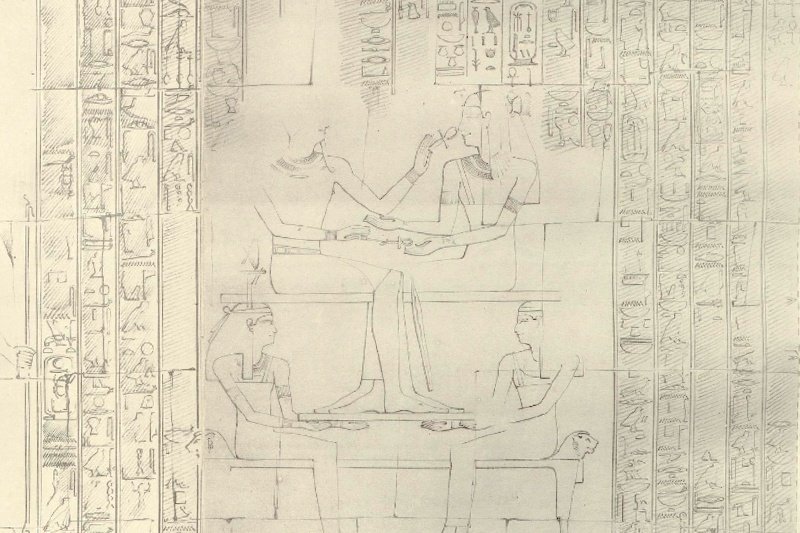
Mortuary temple of Hatshepsut 3D Scanning Project - WORLD SCAN PROJECT’s Challenge
The 18th Dynasty, which marks the beginning of the New Kingdom period, was an era in which famous pharaohs such as Thutmose III and Tutankhamun lived, and it boasted exceptional prosperity. It was Queen Hatshepsut, a female pharaoh, who laid the foundations for this era. Her mortuary temple is inscribed with her many accomplishments.
This time, we will introduce the mortuary temple of Hatshepsut, built at Deir el-Bahari on the west bank of Luxor, Egypt, along with the results of the World Scan Project (W.S.P) investigation.
Queen Hatshepsut: The Great Female Pharaoh
Hatshepsut began her reign as regent for her young stepson, Thutmose III, after the early death of her husband, Thutmose II. Eventually, she asserted her rightful claim to the throne as the legitimate heir of her father, the previous Pharaoh, Thutmose I, and declared herself Pharaoh, holding the reins of government.

https://www.metmuseum.org/en/art/collection/search/544450
Hatshepsut, who reigned for about 20 years, led people through innovative initiatives. She recruited talent from the lower classes into key positions and also oversaw the construction of major monuments, including the obelisk at Karnak Temple. She also preferred peace to military expeditions and wars, conducted trade through peaceful diplomacy, and led Egypt to become a nation of peace and prosperity.
The Mortuary temple of Hatshepsut
The Mortuary Temple of Hatshepsut was built under the direction of her close advisor, Senenmut, at the foot of the cliffs on the eastern side of the Valley of the Kings. It consists of three terraces connected by ramps, courtyards, and shrines. Various scenes depicting the queen's accomplishments and her ascension to pharaoh are preserved in murals and reliefs.


Photo by Olaf Tausch via Wikimedia Commons (CC BY 3.0)
In particular, the south-west portico on the middle terrace depicts the trading expeditions conducted by Hatshepsut, providing valuable insights into how ancient Egyptians perceived people from other nations.
Although the exact location of the Land of Punt, an important trading partner, remains unknown, details such as the stilt houses, palm trees, and fish species depicted suggest that it was in the vicinity of modern Somalia or Ethiopia. The journey, involving crossing the Red Sea by ship with a large tribute and bringing back spices, gold, and ivory as reciprocation, was long and perilous. Yet, Hatshepsut accomplished this feat and brought prosperity to Egypt.


The Divine Birth of Hatshepsut
The north-west portico is known as the Birth Colonnade, where the legitimacy of her rule as Pharaoh, despite being a woman in a time when men held the right of succession, by tracing back to her divine birth.
The story engraved in the reliefs begins with the god Amun-Ra impregnating Hatshepsut’s mother, thus it represents herself as a divine daughter of the god Amun-Ra.

https://digi.ub.uni-heidelberg.de/diglit/naville1896bd2/0046/image,info
After the encounter, Amun instructs the gods Khnum and Heket, to create Hatshepsut's body and her "ka", which is depicted with male genitalia. This suggests that Hatshepsut, who possessed both a female body and a male soul, had the rights of both sexes, thus justifying her ability to become pharaoh.

https://digi.ub.uni-heidelberg.de/diglit/naville1896bd2/0047/image,info
Amun shrine
On the upper terrace stood a whole row of statues, Hatshepsut's head and a mummy body of Osiris, guarding the innermost sanctum, Amun shrine. Amun shrine is the most sacred area, adorned with an arched ceiling painted with blue celestial maps and lavish wall paintings. Deep within, a chamber houses the statue of the god Amun. During the winter solstice, sunlight streams into the sanctum, creating a beautifully solemn atmosphere.

Luxor (Egypt): temple of Hatshepsut
Photo by Marc Ryckaert via Wikimedia Commons (CC BY-SA 4.0)

Photo by Olaf Tausch via Wikimedia Commons (CC BY 3.0)
Making the world, the future, and curiosity closer
As evidenced by the achievements depicted in her mortuary temple, Queen Hatshepsut is remembered as one of the most remarkable figures in ancient Egyptian history, both for her ambitious reign and for establishing her position as pharaoh despite being a woman.

Djeser-Djeseru – Hatshepsut's temple
Photo by Hamerani via Wikimedia Commons (CC BY 3.0)
World Scan Project undertook a 3D scanning survey of this mortuary temple to preserve Queen Hatshepsut's great achievements and the architectural beauty of ancient Egypt for future generations and to allow people around the world to experience the beauty of this ancient site.
Through this initiative we hope to convey the stories told by these ancient relics to future generations, fostering connections with the past, learning, and inspiration. If you are interested, please follow the activities of the World Scan Project and support us.

Please also check out this video about the mortuary temple of Hatshepsut.
この記事が気に入ったらサポートをしてみませんか?
